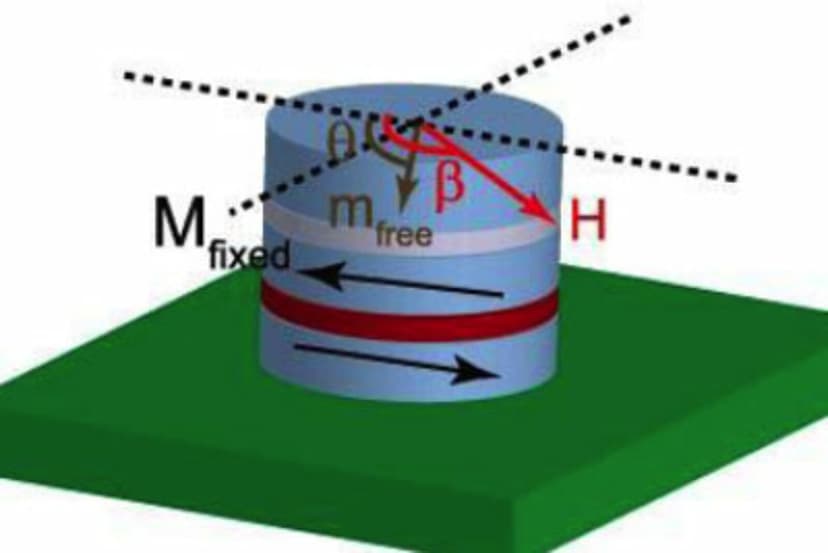Physicists Measure Current-Induced Torque in Nonvolatile Magnetic Memory Devices

(Originally published by Cornell University)
March 3, 2011
Tomorrow's nonvolatile memory devices -- computer memory that can retain stored information even when not powered -- will profoundly change electronics, and Cornell researchers have discovered a new way of measuring and optimizing their performance.

Using a very fast oscilloscope, researchers led by Dan Ralph, the Horace White Professor of Physics and member of the Kavli Institute at Cornell for Nanoscale Science, and Robert Buhrman, the J.E. Sweet Professor of Engineering, have figured out how to quantify the strength of current-induced torques used to write information in memory devices called magnetic tunnel junctions. The results were published online Feb. 27 in the journal Nature Physics.
Magnetic tunnel junctions are memory storage devices made of a sandwich of two ferromagnets with a nanometers-thick oxide insulator in between. The electrical resistance of the device is different for parallel and nonparallel orientations of the magnetic electrodes, so that these two states create a nonvolatile memory element that doesn't require electricity for storing information. An example of nonvolatile memory today is flash memory, but that is a silicon-based technology subject to wearing out after repeated writing cycles, unlike magnetic memory.
What has held back magnetic memory technology is that it has required magnetic fields to switch the magnetic states -- that is, to write information. This limits their size and efficiency because magnetic fields are long-ranged and relatively weak, so large currents and thick wires are needed to generate a large-enough field to switch the device.
The Cornell researchers are studying a new generation of magnetic devices that can write information without using magnetic fields. Instead, they use a mechanism called "spin torque," which arises from the idea that electrons have a fundamental spin (like a spinning top). When the electrons interact with the magnets in the tunnel junctions, they transfer some of their angular momentum. This can provide a very strong torque per unit current, and has been demonstrated to be at least 500 times more efficient than using magnetic fields to write magnetic information, Ralph said.
To measure these spin torques, the researchers used an oscilloscope in a shared facility operated by Cornell's Center for Nanoscale Systems. They applied torque to the magnetic tunnel junctions using an alternating current and measured the amplitude of resistance oscillations that resulted. Since the resistance depends on the relative orientation of the two magnets in the tunnel junction, the size of the resistance oscillations could be related directly to the amplitude of the magnetic motion, and hence to the size of the torque.
The researchers hope such experiments will help industry make better nonvolatile memory devices by understanding exactly how to structure them, and also, what materials would best be used as the oxide insulators and the ferromagnets surrounding them.
The work was supported by the National Science Foundation, the Army Research Office and the Office of Naval Research, and included collaborators Chen Wang, graduate student and first author; graduate student Yong-Tao Cui; and Jordan A. Katine from Hitachi Global Storage Technologies.